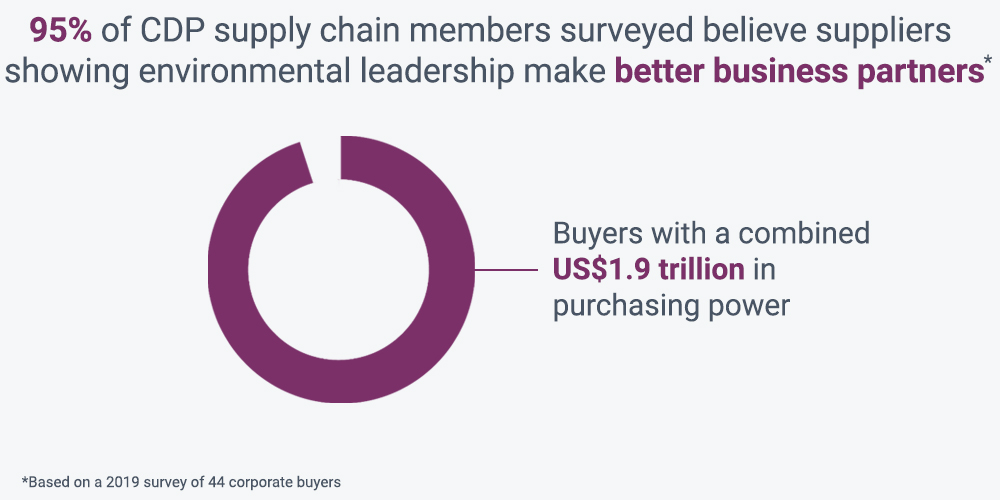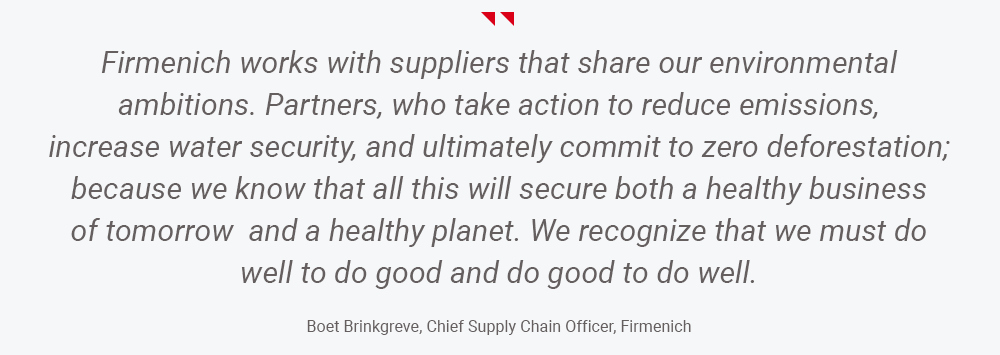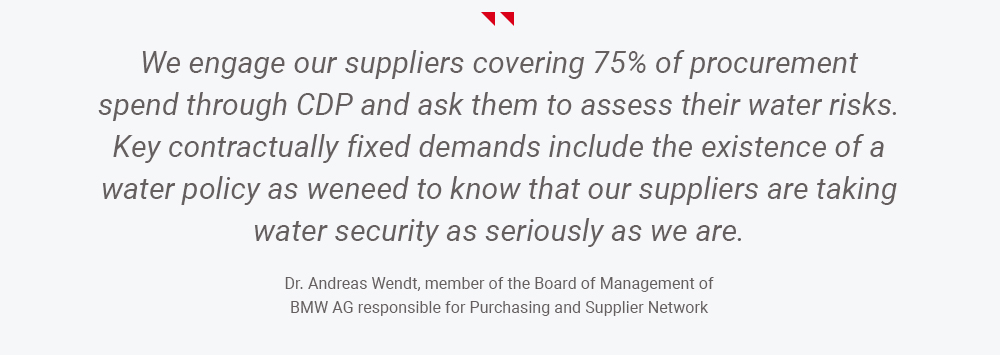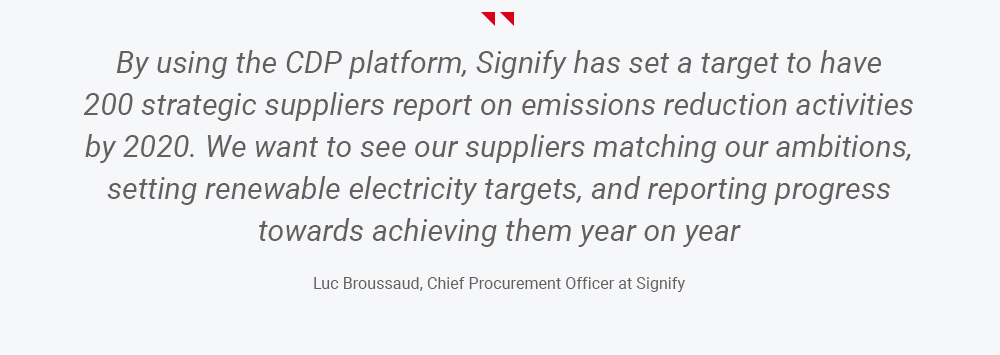Changing the Chain
Global Supply Chain Report 2019/20
The private sector has huge potential to drive environmental action. However, with supply chain emissions on average 5.5 times greater than operational emissions, it’s clear that to take meaningful action, companies must leverage their purchasing power, and collaborate with their supply chains.
Buyers must encourage suppliers to transition to renewable electricity
For companies and their suppliers, taking environmental action comes with a host of opportunities. In 2019, suppliers cut 563 MtC02e worth of emissions - equivalent to removing 119 million cars from the road for a year - and reported subsequent savings of over US$20 billion.
However, with only 29% of suppliers reporting an absolute decrease in 2019 emissions, it’s clear purchasers and their suppliers must do much more to achieve a 1.5 degree world.
Switching to renewable electricity is one of the fastest ways to reduce emissions. Renewable electricity currently makes up just 11% of suppliers’ energy mix. By increasing the amount of renewable electricity they source by 20 percentage points, suppliers have the power to cut global emissions by a gigaton.
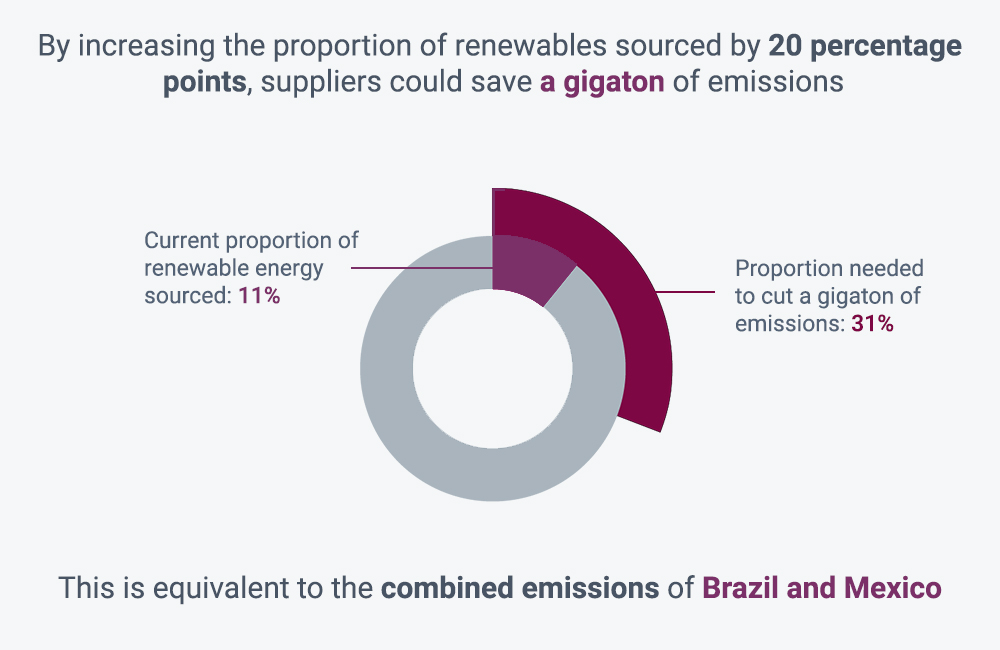
However, buyers need to communicate this request to their suppliers. 70% of the CDP supply chain members, when surveyed, stated they are actively engaging with suppliers to make the switch to renewable electricity, but there’s a long way to go. As it stands, only 4% of suppliers report having a renewable energy target in 2019.
Supplier's ambition often lags behind the buyers' ambitions. This inaction generates corporate risk.
Failure to act on climate change, deforestation and water risks comes at a hefty price. Suppliers report environmental risks could have a financial impact of US$1 trillion.
Companies downstream of these supply chains face incurring costs from disruption, reputational damage, and regulatory changes.
A lack of supplier ambition can jeopardize a company's own environmental targets and undermine their reputation. While 71% of buyers working with CDP have zero deforestation targets, only 27% of suppliers have policies that match this ambition.
It is critical purchasers work with their suppliers to ensure their climate ambitions aren’t being undone further up the value chain. 95% of the major buyers we surveyed are using environmental metrics and CDP data to manage their supplier relationships, or plan to within two years.
Buyer engagement drives change
Companies that are serious about taking meaningful action to mitigate their environmental risks must leverage their purchasing power, and work with their suppliers, to ensure ambition cascades upstream.
In 2019 125 CDP supply chain members wielding over US$3.6 trillion in purchasing power engaged with their suppliers by asking them to disclose through CDP.
Those suppliers that are engaged are setting themselves up for success. By reporting through CDP, they are enabling themselves to more accurately assess and address their environmental risks, and in doing so establishing themselves as better business partners.
